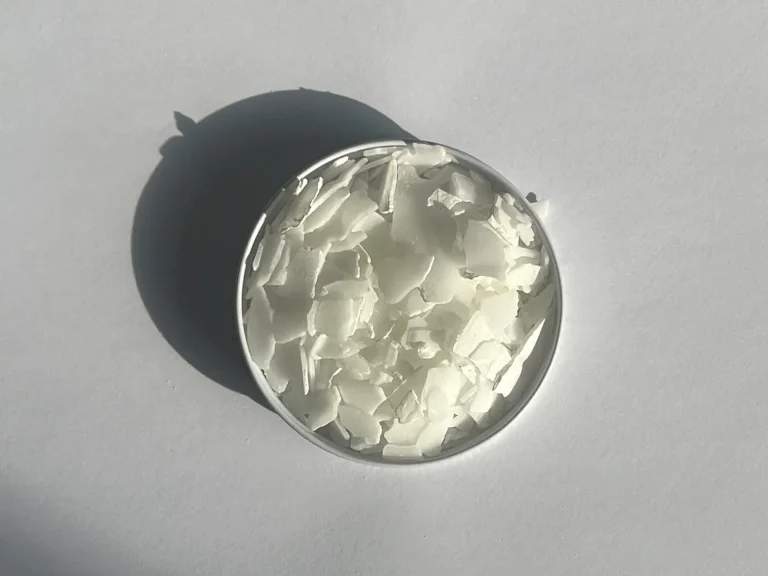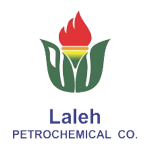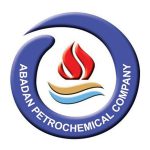Aniline
Aniline is the simplest aromatic amine, consisting of a benzene ring attached to an amino group. Its chemical formula is C6H5NH2. The molecular weight of this compound is 93.129 gr/mol, and its density is 1.022 gr/cm3. This substance serves as an intermediate in the production of over 300 chemical compounds, making it of significant importance.
It is a volatile oily liquid with an unpleasant odor resembling that of rotten fish. It is colorless under normal conditions but oxidizes upon exposure to light and air, turning yellow or brownish. When frozen, it forms green-yellow crystals.
This material vapors are heavier than air, causing them to move downwards and therefore, spread along the ground surface. Consequently, the presence of an ignition source can lead to the vapor explosion. Upon combustion, it produces a large flame accompanied by smoke, and nitrogen oxides are also generated as a toxic compound in this process.
Prolonged contact with this substance can cause serious damage to the skin and respiratory system, resulting in irritation and inflammation.
The unique properties of this substance have led to its widespread use in various industries, including cosmetics, pharmaceuticals, resin production, agriculture, polyurethane foam production, insecticides, and pesticides.
Exporting Aniline to various countries with the best price has been one of the achievements of Petro Nour Mehr Company in recent years.
For more accurate information regarding prices or purchasing the product, it is better to contact the sales department of Petro Nour Mehr Company.

Aniline Manufacturers in Iran
Karun Petrochemical and other domestic factories are producers of this chemical material in Iran.
These units are among the largest Aniline producers in Iran and play a significant role in supplying domestic needs and exporting this material to global markets.
Aniline Manufacturers Worldwide
Major this material manufacturers worldwide include:
Dow Chemical Company : Dow is a large American chemical company involved in the production of this material.
Huntsman Corporation : This company is a major chemical manufacturer involved in the aniline industry.
Other Companies: Besides Dow and Huntsman, other companies like LyondellBasell Industries also engage in this material production in the United States.
Additionally, other companies may be active in aniline production or use it as an intermediate substance in manufacturing processes across the globe.
Applications of Aniline
Aniline is a highly versatile chemical compound used in various industries. Some of its primary applications include:
Polyurethane Production
Methylene diphenyl diisocyanate (MDI), produced from aniline and formaldehyde, is widely used in manufacturing polyurethane polymers. These polymers serve as intermediate polyurethanes in the production of various products such as rigid and semi-rigid polyurethanes, insulation, thermoplastic resins, casting products, adhesives, and shoe soles. Additionally, MDI serves as a raw material in producing chemicals used in rubber processing, such as antioxidants, stabilizers, accelerators, activators, and other vulcanization additives.

Agriculture
This material contributes to reducing germination, halting growth, and reducing the size of certain weeds in agriculture. It plays a crucial role in the production of herbicides, with 3-trifluoromethylaniline being one of the key herbicides synthesized from aniline.

Plastics Industry
Rubber derivatives produced from aniline are used in manufacturing automotive tires, balloons, and gloves. Compounds like mercapto benzothiazole are known as rubber reinforcing agents. Compounds such as diphenyl guanidine, diphenylamine, aniline ketone, and other similar substances are also used in the rubber production process.

Pharmaceuticals
It is a fundamental chemical used as a valuable precursor in various industries, including pharmaceuticals. It plays a crucial role in the production processes of many drugs. Some drugs synthesized from aniline include stanylides, paracetamol, and sulfonamide drugs. These drugs are used as pain relievers, anti-inflammatory agents, antibiotics, and antibacterial drugs, playing a vital role in maintaining health and treating many diseases.

Textiles
Synthetic dyes can be categorized into aniline-based and chromium-based dyes. Aniline-based dyes are available in green, yellow, brown, and black colors in the industry. To produce green color, a combination of aniline with potassium chloride is used, while black color is obtained by immersing the fabric in aniline hydrochloride solution and an oxidizing agent.
Aniline-based colors are used in dyeing denim fabrics and printing designs on fabrics. Additionally, oxidative polymerization of this material is used to increase the electrical conductivity of threads, a process that occurs without altering the mechanical properties of the threads.

Polymer Industry
4,4′-Methylene diphenyl diisocyanate (MDA), produced from the reaction between aniline and formaldehyde in an acidic medium with an appropriate catalyst, plays a crucial role in the polymer industry.
The PMDA polymer obtained from the polymerization of MDA is used in producing a range of vital compounds, including isocyanates, polyurethanes, expandable sponge fibers, semi-flexible foams, thermoplastic resins, automotive products, foam insulation, and neoprene sheets. These polymers find applications in various industries due to their outstanding technical and practical properties.
Gasoline and Fuel Production
N-methylaniline, known as a key and practical derivative in the fuel industry, is used as a powerful octane booster additive in fuels. This compound, an essential part of industrial derivatives, plays an effective role in improving fuel quality.

Synthesis of Chemical Compounds
Aniline and its derivatives are important precursors used in synthesizing various chemical compounds. These substances are obtained from different reactions. For example, diazonium salt is produced from the reaction between nitrous acid and aniline, which is one of the most widely used compounds in the production of dyes and other chemicals. Additionally, dimethyl aniline and monomethyl aniline are obtained from the reaction of aniline with methyl alcohol.
On the other hand, cyclohexylamine is produced from the hydrogenation of aniline, while quinone, azobenzene, nitroso benzene, para-aminophenol, and phenazine are obtained from the oxidation of this chemical compound. Various types of polyurethanes and isocyanates are also produced from aniline. This diversity in reactions and the production of various derivatives highlight the significant importance and wide-ranging applications of aniline and its derivatives in the chemical industries.
Storage Conditions for Aniline
This material is recognized as a highly toxic compound that can have severe and irreversible side effects upon contact. Due to its high boiling point, this substance is very stable under normal environmental conditions.
However, when exposed to direct heat, it decomposes and releases toxic nitrogen oxide gases with a black color. Its stability against sunlight and atmospheric oxygen is low, gradually oxidizing and losing its physical properties and appearance. In the presence of strong oxidizing agents, acids, concentrated bases, and metal salts such as iron, lead, and aluminum, this substance is highly unstable and rapidly decomposes.
Vapors generated by heating aniline can react with air and explode at high concentrations. Hazardous gases such as carbon monoxide and nitrogen oxide produced by its decomposition are extremely dangerous in confined spaces and can lead to suffocation and death under severe conditions.
For this reason, exposure to direct heat and contact with flammable materials should be avoided. It acts as a potent skin irritant and is rapidly absorbed through the skin.
Its vapors and gases can also enter the body through the eyes, inhalation, and ingestion. Adverse effects of contact with this substance may include headache, dizziness, nausea, respiratory problems, and unconsciousness. Prolonged exposure to this substance can lead to genetic changes in cells and subsequently the development and growth of cancer cells.
For the storage of this substance, it must first be ensured that it is kept away from acidic environments and foodstuffs. The container storing this substance should be placed away from environmental stimuli such as sunlight, heat, and moisture. It is best to store this substance in a dry, cool environment away from direct sunlight to protect it from environmental effects.
Additionally, protective measures should be taken to prevent chemical changes resulting from contact with air. The storage time of this substance should be less than two years while preserving its properties. If nitrobenzene is colorless, storage should be done in a way that prevents discoloration.
It requires specific conditions for storage and use. These conditions include a dry, cool environment away from active substances and heat and stored in an environment with a temperature of 25 degrees Celsius. Due to its high sensitivity to direct light and oxygen, the storage container must be completely sealed and opaque.
After each use, the container lid should be quickly closed and stored in an inert environment as much as possible. If exposed to any of the following conditions, take the following actions promptly: If in contact with eyes, rinse eyes thoroughly with plenty of water for 30 minutes and seek medical attention. If in contact with skin, remove contaminated clothing and wash the contact area with plenty of water and soap. If inhaling vapors, move the affected person to fresh air and if respiratory problems persist, seek medical attention.
If this compound is swallowed, immediately contact emergency services. In severe cases, the patient should be immediately transferred to the hospital and placed under medical care. Ignoring these recommendations can have irreversible consequences.
Packaging for EPS
- Export-grade aniline with a purity of 99.8% and high-grade quality is supplied in sealed 230-kilogram barrels under nitrogen gas coverage. Additionally, this product is available in a mixture with petroleum diluents or other solvents for blending into gasoline as an octane booster.
- Sealed barrels and closed-top tanks are suitable for packaging this material. This substance is typically placed in barrels weighing 230 or 220 kilograms. Use containers that can prevent leakage, provide ventilation, and minimize substance evaporation. The containers should also be resistant to transportation damage. Ensure the absence of flammable materials in the environment when storing mono ethanolamine in warehouses. This substance should be stored in dry, cool, and ventilated warehouses.
- This material packaging is usually in liquid form since aniline is a liquid and transportable substance. Most aniline is introduced into specialized tanks or transportation tanks in liquid form and stored there. Typically, to ensure safe transportation and storage of this material, steel tanks or plastic tanks with appropriate and secure covers are used to prevent leakage and evaporation.
- Furthermore, this material packaging in aqueous solutions is also common, where aniline is dissolved in water for use in certain processes or required productions.
- In cases where it is packaged for sale to factories or various industries, plastic bottles or bulk containers inside tanks using specialized transportation tanks may be used. Additionally, in industries requiring larger quantities of aniline, it may be stored and delivered in larger containers such as metal barrels or liquid transportation tanks.
- Adherence to international packaging standards, labeling, and transportation conditions can be effective in selecting the appropriate packaging and exporting aniline. It is also important to emphasize the protection of the product against shocks, moisture, and environmental damage during transportation.
Advantages and Disadvantages of Aniline
This material, with the chemical formula C6H5NH2, is a vital chemical compound in various industries and offers significant advantages. This compound plays a crucial role in producing a wide range of chemical products, including dyes, plastics, resins, and pharmaceuticals. Additionally, it serves as a fundamental material for producing different colors and is widely used in the plastic industry.
However, this material also has its drawbacks. For instance, its toxicity can harm the environment and the health of humans and animals. Moreover, the risk of explosion and combustion associated with aniline is a serious concern that requires careful handling. Therefore, responsible and intelligent use of aniline, while adhering to safety protocols and environmental regulations, is necessary to leverage its advantages and mitigate its disadvantages.
Physical and Chemical Properties of Aniline
Given its chemical and physical characteristics, it is one of the main substances in the chemical industries, significantly impacting the global economy. Let’s examine its properties:
Aniline is a colorless to dark brown oily liquid that darkens upon exposure to air and light. It has a distinct amine odor (detectable at 0.6 to 10 ppm) and a burning taste. It is relatively soluble in water. Aniline mixes with alcohols, benzene, chloroform, carbon tetrachloride, acetone, and most organic solvents.
It is flammable and darkens upon exposure to air and light. When heated to temperatures above 190 or upon decomposition, it produces toxic and corrosive vapors (ammonia, nitrogen oxides, and carbon monoxide) and flammable vapors. Aniline is a weak base. It reacts vigorously with strong oxidizers, acids, acetic anhydride, chloromethyl monomers, beta-propiolactone, and epichlorohydrin, leading to ignition and explosion. It reacts with metals such as sodium, potassium, and calcium, producing flammable hydrogen gas. It attacks copper and its alloys.
Types of Aniline grades
Aniline is commercially available in various grades depending on its purity and intended use. Here are some common grades of aniline:
Technical Grade : This grade of aniline typically has a purity ranging from 90% to 99%. It may contain impurities and is often used in industrial applications where high purity is not critical.
Laboratory Grade : Laboratory-grade aniline has a higher level of purity compared to technical grade, typically ranging from 99% to 99.5%. It is commonly used in laboratory settings for research, chemical synthesis, and analysis.
Reagent Grade : Reagent-grade aniline has an even higher purity level, typically exceeding 99.5%. It is free from most impurities and is suitable for use in analytical chemistry, where precise measurements and minimal impurities are required.
Analytical Grade : This grade of aniline is of the highest purity, often exceeding 99.9%. It is free from impurities and contaminants, making it suitable for critical analytical applications, such as spectroscopy and chromatography.
Ultra-Pure Grade : Ultra-pure aniline is the highest grade available, with purity levels approaching or reaching 100%. It undergoes extensive purification processes to remove even trace impurities and is used in sensitive applications such as semiconductor manufacturing and pharmaceutical production.
The specific grade of aniline required depends on the intended application and the level of purity necessary to achieve desired results. Industrial applications may tolerate lower purity grades, while research and analytical applications typically require higher purity grades to ensure accuracy and reliability of results.
How to Buy Polyethylene?
- Buy from a reputable and authorized supplier that holds necessary certifications and guarantees quality.
- Compare the prices of these materials in different markets and compare them with the global market price.
- Examine the sales conditions regarding quantity, delivery time, packaging, transportation methods, and payment terms.
- If you intend to import polystyrene from foreign countries, investigate customs and legal regulations and comply with export and import regulations.
- Contact bravopolymer to obtain the most suitable export price based on your conditions.
- After signing the contract, you can place your order.
- Secure and suitable payment methods according to customer preferences are provided by the company.
- Then, the loading stage is completed by selecting and introducing a transport company.
- Necessary documents for customs clearance at the destination city are also provided to customers by bravopolymer.
The largest distributor of polymers in the Middle East


















